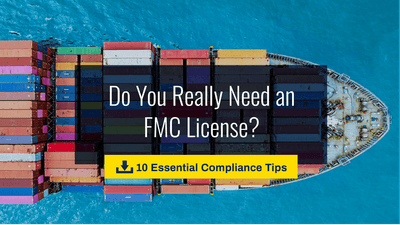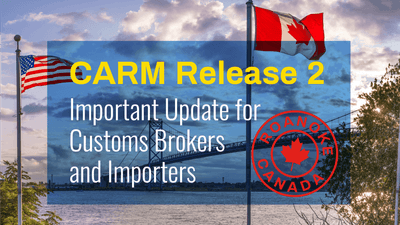July 16, 2015 | ATA Carnet, Customs Bonds
ATA Carnet Shipments Impacted by Importer Security Filing (ISF)

The trade community is directly impacted by CBP’s importer security filing (ISF, also known as 10+2) requirements. ATA Carnet shipments are no exception, as ATA Carnets are not exempt from ISF. However, ATA Carnet shipments are exempt from posting the bond required of other shipments entering or re-entering the U.S. via ocean vessel. Except for the provision of the six digit HTSUS codes, the information needed to complete the ISF can be found on the ATA Carnet or available from the customs broker clearing the entry. CBP has modified its system to accommodate ATA Carnet entries whether they are a U.S. ATA Carnet returning to the U.S. or a foreign ATA Carnet making entry. ATA Carnet entries have their own code in CBP’s system which is 06, and data equivalences have been made. Below is the detailed breakdown on how to complete an ISF filing for an ATA Carnet entry:
- Requirements 1-4 “Importer of record, consignee, buyer or owner, and seller or owner.” The holder name as listed in Box A on the ATA Carnet green cover will meet CBP requirements.
- Requirement 5 “Ship to parties or to whom the goods are going.” This can be a trade show, a customer, a warehouse or the holder listed in Box A on the ATA Carnet green cover.
- Requirement 6 “Manufacturer and last foreign address” for ATA Carnet purposes means the owner of the goods which is the holder listed in Box A on the green cover. Also provide an address where the goods were last located, for example a trade show, job site or client offices, or holder’s address in the case of a foreign ATA Carnet.
- Requirement 7 “Country of origin.” For ATA Carnet purposes this means the places where the ATA Carnet and the goods have visited. The customs stamps on the ATA Carnet counterfoils should be sufficient to determine which countries were visited. For a foreign ATA Carnet this will be the country where the ATA Carnet originated.
- Requirement 8 “HTS code.” The goods must be classified to the 6 digit level.
- Requirement 9 “Consolidator” is the entity/person who packed the container prior to departure. This name should be known to the customs broker or freight forwarder.
- Requirement 10 “Location where the consolidator packed the container.” Once again this is information that should be readily available to the customs broker or freight forwarder.
The additional 2 data requirements will be provided by the vessel operator and are not specific to each individual shipment. CBP has exercised extraordinary restraint on enforcement since its interim final ISF rules went into effect six years ago. The first half of 2015 will usher in significant changes in this regard. On non-ATA Carnet moves, CBP ceased their limited acceptance of late ISFs without bonds as of January 10. Additionally, the limited liquidated damage (“LD”) enforcement phase that commenced last spring is scheduled to expire on May 13, 2015.
How aggressive CBP will become on enforcement via LD assessments remains to be seen. However, some things are certain. Parties responsible for ISF filing will be seeing more holds, more LD cases, and reduced leniency in general on the part of CBP. It is more important than ever for ATA Carnet users as well as other importers of goods by ocean to work closely with their customs brokers, freight forwarders, and other international trade professionals to craft processes that ensure full and timely compliance with ISF requirements. This information is provided by Roanoke Insurance Group Inc., a service provider for the U.S. Council for International Business (USCIB). The above constitutes USCIB’s understanding of the ISF filing requirements as they apply to ATA Carnets.
This announcement was originally published in the NEI March 2015 Newsletter.












